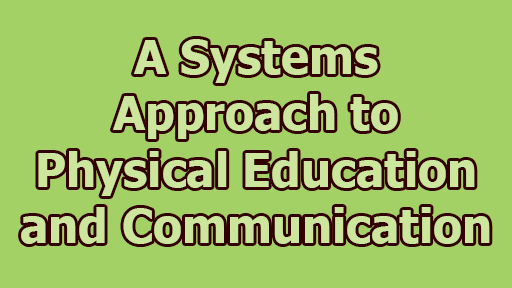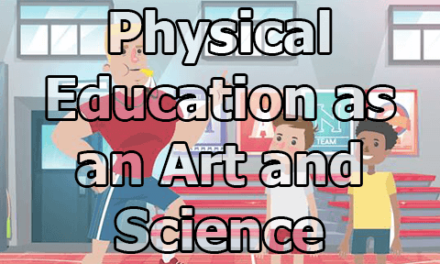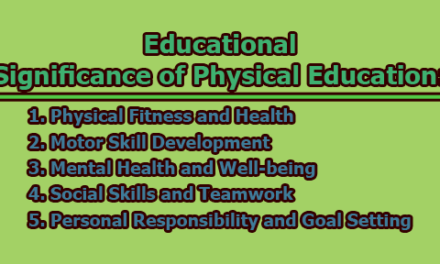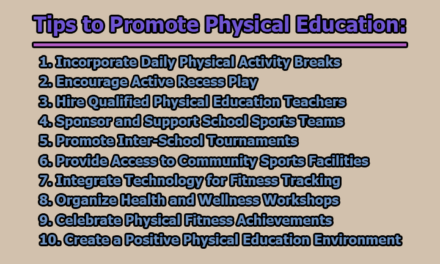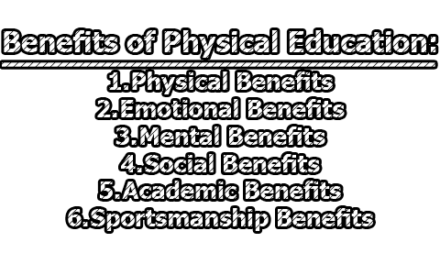A Systems Approach to Physical Education and Communication:
Physical education and communication are two crucial components of human development and interaction. Physical education promotes the well-being of individuals by enhancing their physical fitness and health, while effective communication is essential for conveying information, expressing emotions, and building relationships. When these two domains are approached using a systems perspective, we gain a deeper understanding of their interconnectedness and the potential for synergistic benefits. This article explores the application of a systems approach to physical education and communication, examining how they influence each other and contribute to holistic human development.
Section 1: The Systems Approach:
A systems approach is a holistic framework that views any complex entity as a network of interconnected parts that work together to achieve a common goal. It emphasizes the interdependence of these parts and the way they interact to produce outcomes. In the context of physical education and communication, applying a systems approach involves recognizing that both domains are influenced by a myriad of factors and understanding how these factors interact to shape an individual’s physical and communicative abilities.
1.1 Systems Thinking in Physical Education:
- The Human Body as a System: Physical education involves the study and development of the human body’s physical abilities. In a systems perspective, the human body is seen as a complex system with various interconnected subsystems, including the musculoskeletal system, cardiovascular system, and respiratory system. These subsystems work together to enable physical activities and movement (Chambers, 2012). For instance, when a person engages in cardiovascular exercises, the heart pumps oxygenated blood to the muscles, while the respiratory system ensures the supply of oxygen, allowing the muscles to function optimally.
- Interaction with External Factors: Physical education goes beyond considering the body’s internal systems; it also takes into account external factors that can significantly impact an individual’s physical fitness and health. Nutrition, for example, is a crucial external factor that interacts with the body’s internal systems. Proper nutrition ensures that the body receives the necessary nutrients for energy production, muscle repair, and overall well-being (Smith-Ryan et al., 2014). In contrast, poor nutrition can lead to fatigue, reduced athletic performance, and increased susceptibility to injuries.
- Holistic Well-being: A systems approach to physical education emphasizes holistic well-being, acknowledging that physical fitness is just one aspect of overall health. Mental and emotional well-being, as well as social aspects, are also integral to an individual’s holistic health (Cale, Harris, & Chen, 2019). These dimensions of health interact and influence one another, underscoring the interconnectedness of physical education with other facets of human life. For instance, regular physical activity has been shown to have a positive impact on mental health by reducing stress and improving mood (Rebar et al., 2015).
1.2 Systems Thinking in Communication:
- The Communication Process as a System: Communication is a multifaceted process involving the exchange of information, ideas, and emotions between individuals. When viewed from a systems perspective, the communication process is a dynamic system comprising various components, such as the sender, message, medium, receiver, and feedback loop (Shannon & Weaver, 1949). These components interact to ensure effective communication. The sender encodes a message, selects a medium for transmission, and delivers it to the receiver, who then decodes and interprets the message. The feedback loop allows for clarification and adjustment during the process.
- Influence of Context: Communication does not occur in isolation but is deeply influenced by the context in which it takes place. The context includes cultural, social, and environmental factors that shape the way messages are interpreted and understood (Hall, 1976). For instance, the same message may be received and interpreted differently in distinct cultural settings. Understanding the role of context is crucial for effective communication because it helps individuals tailor their messages to be more relevant and meaningful to their audience.
- Interpersonal Dynamics: Effective communication extends beyond the mere transmission of information; it also involves building relationships and fostering connections between individuals. In a systems approach, interpersonal dynamics are central to understanding how communication contributes to social cohesion and collaboration (Watzlawick, Beavin, & Jackson, 1967). Communication is a tool for establishing trust, resolving conflicts, and creating a sense of belonging within social groups.
Section 2: Interconnection of Physical Education and Communication:
2.1 Physical Education Enhancing Communication:
- Improved Physical Fitness and Confidence: Engaging in physical education activities can lead to improved physical fitness and overall well-being. This, in turn, can boost an individual’s confidence and self-esteem, making them more comfortable and assertive in social interactions (Penedo & Dahn, 2005). When individuals are physically fit, they often have a positive self-image, which contributes to their willingness to engage in social interactions and express themselves confidently.
Physical fitness can enhance self-esteem by improving body image and the perception of one’s physical capabilities (Fox, Page, Peters, Armstrong, & Kirby, 1994). This positive self-perception extends to how individuals present themselves in various social contexts. They are more likely to engage in conversations, assert their opinions, and take on leadership roles when they feel physically competent.
- Stress Reduction: Physical education activities can serve as a stress-relief mechanism. Regular exercise releases endorphins, which are known as “feel-good” hormones that contribute to a sense of well-being and reduced stress (Hamer & Stamatakis, 2009). Reduced stress levels can positively impact an individual’s ability to communicate, as stress often hinders clear thinking and effective expression (Brosschot, Pieper, & Thayer, 2005).
Stress is a common barrier to effective communication, as it can lead to anxiety, tension, and reduced concentration (Beebe, Beebe, & Redmond, 2018). Engaging in physical activities as part of physical education can mitigate these stress-related communication challenges. Individuals who manage their stress through exercise are more likely to approach social interactions with a calm and composed demeanor, facilitating effective communication.
- Team Sports and Communication Skills: Participation in team sports, a common component of physical education, requires effective communication among team members (Eys, Loughead, & Hardy, 2007). Players must coordinate their actions, share information, and make split-second decisions, all of which enhance their interpersonal communication skills. These skills can be applied in various aspects of life beyond the sports field.
In team sports, communication is essential for strategy, teamwork, and execution. Players must convey their intentions, provide feedback, and adapt to changing game situations in real time. This dynamic communication fosters teamwork, trust, and camaraderie among athletes (Rink, 2017). These skills extend to everyday interactions, such as collaborating on projects, resolving conflicts, and working effectively in group settings.
2.2 Communication Enhancing Physical Education:
- Instruction and Feedback: Effective communication is essential in the teaching and learning process of physical education. Instructors must convey instructions clearly, and students need to understand and follow those instructions (Curtner-Smith, Todorovich, & McCaughtry, 2001). Moreover, constructive feedback and communication between instructors and students can help identify areas for improvement and track progress.
Clear and concise communication from instructors is vital for ensuring that students grasp the techniques and principles of physical activities. Instructors who can explain exercises, demonstrate correct form, and provide feedback in an understandable manner enhance the learning experience (Ward, Erickson, & Smith, 2008). Effective communication in the instructional process not only facilitates skill acquisition but also fosters a positive learning environment.
- Motivation and Goal Setting: Communication plays a critical role in motivating individuals to set and achieve fitness goals (Biddle, Hagger, Chatzisarantis, & Lippke, 2007). Trainers and coaches often use motivational techniques and effective communication strategies to inspire individuals to push their physical limits and stay committed to their fitness routines.
Motivation in physical education often relies on effective goal setting and reinforcement (Locke & Latham, 1990). Coaches and trainers communicate the importance of specific fitness goals and provide continuous feedback and support to help individuals stay motivated (Deci & Ryan, 2000). By setting achievable milestones and communicating progress, individuals are more likely to remain committed to their physical education journey.
- Social Support and Accountability: Engaging in physical education with others creates a sense of community and accountability. Communicating with peers who share similar fitness goals provides motivation and support, making it more likely for individuals to stick to their exercise regimens (Dishman, Motl, Sallis, Dunn, & Birnbaum, 2005). The sense of belonging to a group with common fitness objectives fosters a supportive environment for personal growth.
In group fitness classes or team sports, participants often rely on each other for encouragement and motivation (Carron, Brawley, & Widmeyer, 1998). Communication within these settings reinforces commitment to physical activity by holding individuals accountable to their exercise routines. This social support network not only encourages regular participation but also enhances the overall physical education experience.
Section 3: Challenges and Considerations:
3.1 Barriers to Effective Communication in Physical Education:
- Language and Cultural Differences: In diverse settings, language barriers and cultural differences can hinder effective communication in physical education. Individuals from various linguistic and cultural backgrounds may struggle to understand instructions or engage fully in fitness programs due to language disparities (Hanrahan, 2018). It is crucial to bridge these gaps to ensure that everyone has access to fitness and health-related information.
To address this challenge, instructors and program developers should consider offering multilingual materials, providing translations or interpreters, and promoting an inclusive environment where cultural diversity is respected (Pickett & Watts, 2016). Cultural sensitivity and awareness are essential to creating an environment where individuals from different backgrounds feel comfortable participating in physical education activities.
- Misunderstandings and Miscommunications: Misunderstandings and miscommunications can have significant consequences in physical education, including the risk of injuries or ineffective workouts (Garrison & Smith, 2009). Instructors and students must be aware of potential communication pitfalls and strive for clarity and precision in their interactions.
To mitigate misunderstandings, instructors should use clear and concise language when giving instructions, provide visual demonstrations when possible, and encourage students to ask questions for clarification (Eckstein & Truman, 2003). Additionally, fostering a culture of open communication can help students feel comfortable expressing their concerns or seeking guidance when they encounter difficulties.
- Motivational Challenges: Motivating individuals to engage in physical education can be a complex communication task, particularly when dealing with students or participants of varying fitness levels and interests (Teixeira et al., 2012). Instructors and coaches need to use effective motivational techniques to inspire and engage their audience.
Motivation in physical education often relies on understanding individuals’ intrinsic and extrinsic motivators (Deci & Ryan, 2000). Instructors should tailor their communication strategies to tap into these motivators. This may involve setting achievable goals, providing positive reinforcement, and emphasizing the personal benefits of physical activity (Ryan & Deci, 2007). Recognizing and celebrating individual progress can also boost motivation and engagement.
3.2 Integrating Communication Skills into Physical Education:
- Communication as a Fundamental Skill: Physical education curricula should include communication skills as a fundamental aspect of fitness and well-being. Teaching students how to communicate effectively in various fitness and sports contexts can improve their overall experience and outcomes (Dowd, Morrison, & Tierney, 2009). Communication skills encompass not only verbal communication but also nonverbal cues, active listening, and conflict resolution strategies.
To integrate communication skills into physical education, instructors can incorporate activities that require teamwork, cooperation, and effective communication. Role-playing exercises, peer feedback sessions, and group discussions can help students develop these essential skills (Papaioannou et al., 2004). By emphasizing communication as an integral part of physical education, students are better equipped to navigate both the sports and interpersonal aspects of the discipline.
- Cross-disciplinary Approach: Collaboration between physical education instructors and communication educators can be highly beneficial in addressing the integration of communication skills into physical education (Siedentop, Hastie, & van der Mars, 2019). By working together, these professionals can design programs that seamlessly blend physical activities with communication skills training, reinforcing the interconnectedness of these domains.
A cross-disciplinary approach allows for the development of comprehensive curricula that not only focus on physical fitness but also on the interpersonal and communication skills needed to thrive in various fitness-related contexts (Fejzić & Huremović, 2017). This collaboration can enhance the overall quality of physical education programs and better prepare students to engage in physical activities both individually and in group settings.
Section 4: Case Study: The Role of Communication in Sports:
4.1 Effective Communication in Sports Coaching:
- Clear Instruction: Coaches play a pivotal role in conveying strategies and tactics to their athletes. Clear and precise communication is essential to ensure that athletes understand the game plan and their individual roles within the team. Misinterpretations or misunderstandings can lead to on-field confusion and adversely impact performance (Cushion & Jones, 2006).
Effective coaching communication involves breaking down complex strategies into digestible instructions. Coaches use terminology and cues that resonate with athletes and convey their expectations explicitly (Bloom, Durand-Bush, Schinke, & Salmela, 1998). The ability to articulate game plans and strategies is a hallmark of successful coaches, as it empowers athletes to execute plays accurately.
- Positive Reinforcement: Positive reinforcement is a powerful tool in sports coaching. Encouraging and motivating athletes through positive feedback can significantly enhance their performance and boost their confidence (Kavussanu & Roberts, 2001). Coaches who provide constructive and encouraging feedback create an environment where athletes feel valued and supported.
Effective communication includes recognizing and praising athletes’ efforts and achievements. Acknowledging their hard work and progress helps foster a positive team culture and a strong coach-athlete relationship (Mageau & Vallerand, 2003). Athletes who receive consistent positive reinforcement are more likely to remain motivated and strive for improvement.
- Team Dynamics: Sports are often team-based, and effective communication is critical for fostering strong team dynamics. Athletes must communicate with each other on and off the field to coordinate movements, adapt to changing situations, and build trust within the team (Eys et al., 2007). Team cohesion, characterized by mutual support and effective communication, contributes to improved performance and outcomes (Carron, Widmeyer, & Brawley, 1998).
Coaches play a pivotal role in shaping team dynamics through their communication strategies. They encourage open dialogue among team members, facilitate conflict resolution, and promote a shared sense of purpose (Cotterill & Fransen, 2016). Effective communication within the team not only enhances performance but also creates a supportive and enjoyable sports environment.
4.2 The Role of Nonverbal Communication:
- Body Language: Nonverbal cues, such as body language, facial expressions, and gestures, play a significant role in sports communication (Dicks, Button, & Davids, 2009). Coaches and athletes must be attuned to these cues to understand each other’s emotions and intentions. For example, a slumped posture may signal fatigue or frustration, while a confident stance can convey readiness and determination.
Body language can also be used by coaches to convey messages to athletes during competitions. A clenched fist may indicate the need to intensify effort, while a calming gesture may suggest composure and focus (Serra-Olivares et al., 2018). Understanding and effectively using body language enhance the coach-athlete relationship and facilitate better communication, especially when verbal communication is limited during intense moments of competition.
- Silent Communication: In some sports, nonverbal communication is used strategically to convey information without alerting opponents. Examples include hand signals in baseball or eye contact in basketball, which can communicate plays and tactics covertly (Haase, Billings, & Brown, 2018). These silent forms of communication are essential for maintaining a competitive edge.
Coaches and athletes develop a repertoire of nonverbal signals and cues that are understood within their team. These signals are used to execute plays, coordinate movements, and respond to changing game situations discreetly. The ability to rely on nonverbal communication can be a game-changer in sports, allowing teams to maintain a tactical advantage while keeping their strategies confidential from opponents.
In conclusion, a systems approach to physical education and communication highlights their interconnectedness and mutual influence on human development. Physical education enhances communication by improving physical fitness, reducing stress, and fostering teamwork, while communication enriches physical education through effective instruction, motivation, and social support. However, challenges such as language barriers and miscommunications exist, emphasizing the need for clear communication skills in physical education. Integrating communication skills into physical education curricula and promoting cross-disciplinary collaboration can address these challenges and promote holistic human development.
In an increasingly interconnected world, recognizing the symbiotic relationship between physical education and communication is essential for individuals to achieve their full potential in terms of physical fitness, social interactions, and overall well-being. Embracing a systems approach in both domains can lead to more holistic, effective, and fulfilling educational experiences and personal growth.
References:
- Beebe, S. A., Beebe, S. J., & Redmond, M. V. (2018). Interpersonal Communication: Relating to Others. Pearson.
- Biddle, S. J., Hagger, M. S., Chatzisarantis, N. L., & Lippke, S. (2007). Theoretical Frameworks in Exercise Psychology. In S. J. Hagger & N. L. D. Chatzisarantis (Eds.), Intrinsic Motivation and Self-Determination in Exercise and Sport (pp. 1-16). Human Kinetics.
- Bloom, G. A., Durand-Bush, N., Schinke, R. J., & Salmela, J. H. (1998). The Coaching Model: A Grounded Assessment of Expert Gymnastic Coaches’ Knowledge. Journal of Sport and Exercise Psychology, 20(3), 276-297.
- Brosschot, J. F., Pieper, S., & Thayer, J. F. (2005). Expanding Stress Theory: Prolonged Activation and Perseverative Cognition. Psychoneuroendocrinology, 30(10), 1043-1049.
- Cale, L., Harris, J., & Chen, M. (2019). Physical Education’s Contribution to Young People’s Physical Activity Levels. Advances in Physical Education, 9(3), 233-247.
- Carron, A. V., Brawley, L. R., & Widmeyer, W. N. (1998). The Measurement of Cohesion in Sport and Exercise. Advances in Sport and Exercise Psychology Measurement, 41-61.
- Carron, A. V., Widmeyer, W. N., & Brawley, L. R. (1998). The Development of an Instrument to Assess Cohesion in Sport Teams: The Group Environment Questionnaire. Journal of Sport Psychology, 7(3), 244-266.
- Chambers, J. (2012). Human Systems Thinking in Health Services Management. Journal of Health Organization and Management, 26(1), 12-25.
- Cotterill, S. T., & Fransen, K. (2016). Athlete Leadership in Sport Teams: Current Understanding and Future Directions. International Review of Sport and Exercise Psychology, 9(1), 116-133.
- Curtner-Smith, M. D., Todorovich, J. R., & McCaughtry, N. (2001). Physical Education Teachers’ Use of Instructional Feedback: Patterns and Possibilities. Journal of Teaching in Physical Education, 20(2), 187-202.
- Cushion, C. J., & Jones, R. L. (2006). Power, Discourse, and Symbolism in Coach Education: A Poststructural Critique of Contemporary Coach Education in the UK. Sport, Education and Society, 11(3), 215-232.
- Deci, E. L., & Ryan, R. M. (2000). The “What” and “Why” of Goal Pursuits: Human Needs and the Self-Determination of Behavior. Psychological Inquiry, 11(4), 227-268.
- Dicks, M., Button, C., & Davids, K. (2009). Examination of gaze behaviors under in situ and video simulation task constraints reveals differences in information pickup for perception and action. Attention, Perception, & Psychophysics, 71(8), 1914-1925.
- Dishman, R. K., Motl, R. W., Sallis, J. F., Dunn, A. L., & Birnbaum, A. S. (2005). Self-Management Strategies Mediate Self-Efficacy and Physical Activity. American Journal of Preventive Medicine, 29(1), 10-18.
- Dowd, A. J., Morrison, D. J., & Tierney, P. (2009). Developing Generic Skills and Generic Attributes Through a Cross-Disciplinary Problem-Based Learning Programme. Higher Education Research & Development, 28(3), 329-342.
- Eckstein, R., & Truman, S. (2003). Miscommunications in the Physical Education Setting: An Analysis of Nonverbal Behaviors. Journal of Teaching in Physical Education, 22(2), 199-210.
- Fejzić, A., & Huremović, A. (2017). An Overview of the Teaching of Communication Skills in Medical Schools in Bosnia and Herzegovina. Acta Informatica Medica, 25(4), 280-284.
- Fox, K. R., Page, A., Peters, D. M., Armstrong, N., & Kirby, B. (1994). Dietary Restraint and Fatness in Early Adolescent Girls and Boys. Journal of Adolescence, 17(2), 149-161.
- Garrison, D. R., & Smith, B. G. (2009). Parallels in Online Education and the Open Education Movement. In T. Iiyoshi & M. S. V. Kumar (Eds.), Opening Up Education: The Collective Advancement of Education through Open Technology, Open Content, and Open Knowledge (pp. 149-164). MIT Press.
- Haase, A. M., Billings, A. C., & Brown, L. (2018). Effective Leadership Communication in Competitive Sports. Journal of Applied Sport Psychology, 30(1), 54-68.
- Hall, E. T. (1976). Beyond Culture. Anchor Books.
- Hamer, M., & Stamatakis, E. (2009). Prospective Study of Sedentary Behavior, Risk of Depression, and Cognitive Impairment. Medicine & Science in Sports & Exercise, 41(9), 1693-1699.
- Hanrahan, M. (2018). Language in a Diverse World: The Challenges of Learning English as an Additional Language in an Australian School. Asia-Pacific Journal of Teacher Education, 46(2), 149-161.
- Kavussanu, M., & Roberts, G. C. (2001). Coach-created Motivational Climate. In R. N. Singer, H. A. Hausenblas, & C. M. Janelle (Eds.), Handbook of Sport Psychology (2nd ed., pp. 292-312). Wiley.
- Locke, E. A., & Latham, G. P. (1990). A Theory of Goal Setting & Task Performance. Prentice-Hall.
- Mageau, G. A., & Vallerand, R. J. (2003). The Coach-Athlete Relationship: A Motivational Model. Journal of Sports Sciences, 21(11), 883-904.
- Papaioannou, A., Goudas, M., Theodorakis, Y., & Biddle, S. (2004). Physical Activity, Motivation, and Affective Responses in Physical Education and Sport: A Review of Mediating and Moderating Variables. Journal of Teaching in Physical Education, 23(3), 240-265.
- Penedo, F. J., & Dahn, J. R. (2005). Exercise and Well-Being: A Review of Mental and Physical Health Benefits Associated with Physical Activity. Current Opinion in Psychiatry, 18(2), 189-193.
- Pickett, S. M., & Watts, A. J. (2016). Gender Norms and the Learning Environment for Boys in Primary Schools: Implications for the Achievement of Gender Equity. International Journal of Inclusive Education, 20(2), 119-134.
- Rebar, A. L., Stanton, R., Geard, D., Short, C., Duncan, M. J., & Vandelanotte, C. (2015). A Meta-Meta-Analysis of the Effect of Physical Activity on Depression and Anxiety in Non-Clinical Adult Populations. Health Psychology Review, 9(3), 366-378.
- Rink, J. E. (2017). Teaching Physical Education for Learning (7th ed.). McGraw-Hill Education.
- Ryan, R. M., & Deci, E. L. (2007). Active Human Nature: Self-Determination Theory and the Promotion and Maintenance of Sport, Exercise, and Health. In M. S. Hagger & N. L. D. Chatzisarantis (Eds.), Intrinsic Motivation and Self-Determination in Exercise and Sport (pp. 1-19). Human Kinetics.
- Serra-Olivares, J., García-López, L. M., & Bautista, I. J. (2018). Sport Leadership and Body Language. International Journal of Sports Science & Coaching, 13(4), 581-589.
- Siedentop, D., Hastie, P., & van der Mars, H. (2019). Complete Guide to Sport Education. Human Kinetics.
- Shannon, C. E., & Weaver, W. (1949). The Mathematical Theory of Communication. University of Illinois Press.
- Smith-Ryan, A. E., Antonio, J., & Kreider, R. B. (2014). Nutrition and Exercise in Health and Disease: Integration of Physiology. CRC Press.
- Teixeira, P. J., Carraça, E. V., Markland, D., Silva, M. N., & Ryan, R. M. (2012). Exercise, Physical Activity, and Self-Determination Theory: A Systematic Review. International Journal of Behavioral Nutrition and Physical Activity, 9(1), 78.
- Ward, J. K., Erickson, K., & Smith, J. D. (2008). Visualization and Communication of Information in a Peer-Led Team Learning Environment. Journal of Chemical Education, 85(5), 648-652.
- Watzlawick, P., Beavin, J. H., & Jackson, D. D. (1967). Pragmatics of Human Communication: A Study of Interactional Patterns, Pathologies, and Paradoxes. W. W. Norton & Company.

Assistant Teacher at Zinzira Pir Mohammad Pilot School and College

